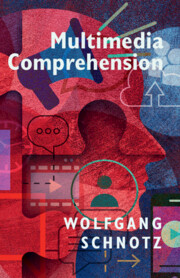
-
Select format
-
- Publisher:
- Cambridge University Press
- Publication date:
- February 2023
- February 2023
- ISBN:
- 9781009303255
- 9781009303217
- 9781009303231
- Dimensions:
- (229 x 152 mm)
- Weight & Pages:
- 0.52kg, 246 Pages
- Dimensions:
- (229 x 152 mm)
- Weight & Pages:
- 0.36kg, 246 Pages
You may already have access via personal or institutional login
Book description
Multimedia messages use combinations of texts, pictures, maps, and graphs as tools for communication. This book provides a synthesis of theory and research about how people comprehend multimedia. It adopts the perspectives of cognitive psychology, semiotics, anthropology, linguistics, education, and art. Its central idea is that information displays can be categorized into two different but complementary forms of representations, which service different purposes in human cognition and communication. Specific interaction between these representations enhances comprehension, thinking, and problem solving, as illustrated by numerous examples. Multimedia Comprehension is written for a broad audience with no special prior knowledge. It is of interest to everyone trying to understand how people comprehend multimedia, from scholars and students in psychology, communication, and education, to web- and interface-designers and instructors.
Reviews
‘As befits a research volume, the book features an extensive bibliography, and the text is well referenced. Yet the book is readable and should be accessible to nonspecialists. It is recommended for academic libraries supporting cognitive sciences as approached through several disciplines. … Recommended.’
D. Z. Spicer Source: Choice
Contents
Metrics
Altmetric attention score
Full text views
Full text views help Loading metrics...
Loading metrics...
* Views captured on Cambridge Core between #date#. This data will be updated every 24 hours.
Usage data cannot currently be displayed.
Accessibility standard: Unknown
Why this information is here
This section outlines the accessibility features of this content - including support for screen readers, full keyboard navigation and high-contrast display options. This may not be relevant for you.
Accessibility Information
Accessibility compliance for the PDF of this book is currently unknown and may be updated in the future.


